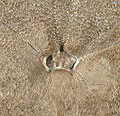The Echinoid Directory
Libyolampas Lambert, 1914, p. 112
| Diagnostic Features |
|
|---|---|
| Distribution | Eocene of Egypt. |
| Name gender | feminine |
| Type | Echinolampas africanus de Loriol, 1880, p. 34; by original designation. |
| Species Included |
|
| Classification and/or Status |
|
| Remarks |
|




